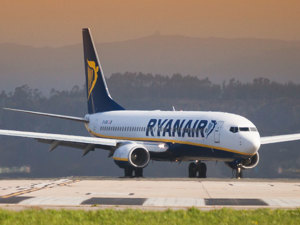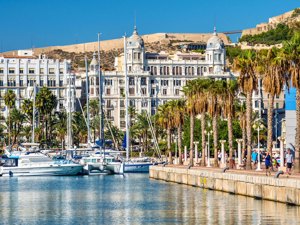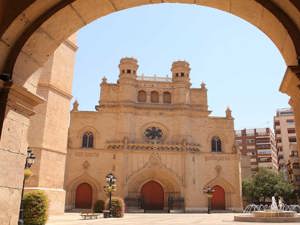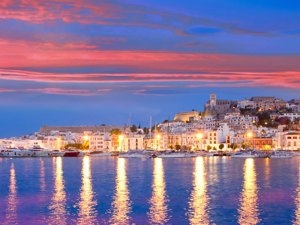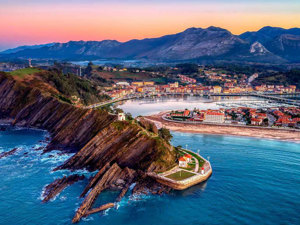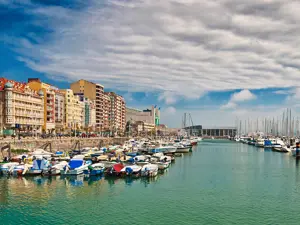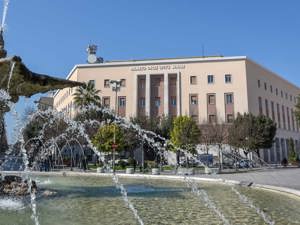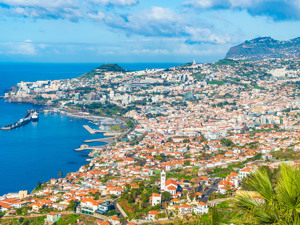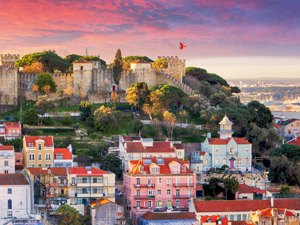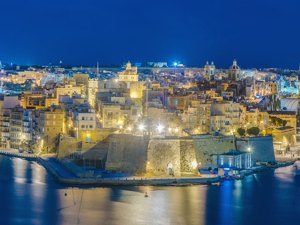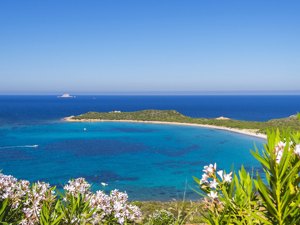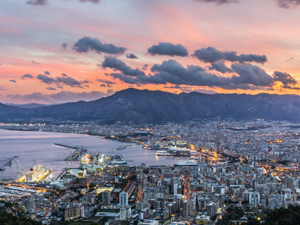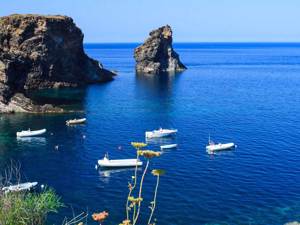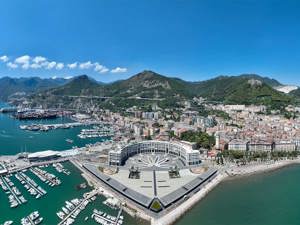A stay on the island of tranquillity
The main Balearic island is a real oasis of peace, kissed by the Mediterranean sun. Mallorca is an island of tranquillity and light, an oasis of peace and relaxation with great beauty. Cheerful and radiant in any period of the year, in winter the island is covered in the blossoms of the almond tree.

Palma de Mallorca. Copyright © Sisterscom.com / Shutterstock
Mallorca is the main island of the Balearics; it has 550 km of coast, with enchanting bays and beaches, and mountains kissed by the Mediterranean sun. Half of the 600,000 inhabitants of the island live in the capital Palma de Mallorca. Founded by the Romans, this city conserves important remains that also recall the centuries of Muslim presence.
The Cathedral of Palma de Mallorca

Palma de Mallorca. La Seu Cathedral. Copyright © Sisterscom.com / Shutterstock
The symbol of the city is the magnificent Cathedral (La Seu) in Gothic style dating back to the fourteenth century, with a grandiose rose window by the architect Gaudì and a central nave that is one of the most imposing and highest in the world. Its façades are true architectural gems: the Gothic Mirador façade faces the sea; el Portal Major to the west is in Renaissance style and el Portal de l’Almoina is the entrance to the cathedral.
The image of the cathedral, with is majestic bell tower, is reflected in the waters of the lake in Parc de la Mar, and from here La Almudaina (the citadel) can be reached. A marvellous example of Gothic architecture, this building was inhabited in the first place by the Moors and was the residence of the Spanish royal family in Mallorca.
The squares in Palma de Mallorca
In Plaza de Cort is the Ayuntamiento, the Baroque town hall, and nearby is the Church of Santa Eulalia, the oldest in Palma, also in Gothic style. Plaza de Espana is the centre of the modern city.

Palma de Mallorca. Town Hall. Copyright © Sisterscom.com / trabantos / Shutterstock
Calle de San Miguel, a busy pedestrian area, leads to Paseo del Borne, a splendid historical street, lined with trees and a place for meeting and relaxation. La Rambla, with its flower sellers, is another popular and colourful walk. It leads to the Botanic Garden with its ficus nitida, the largest tree in Palma.
The Paseo Maritimo in Palma de Mallorca
The seafront walk (Paseo Maritimo), with its graceful, green palms, hugs the enchanting bay for 3 km. From above, in the heart of large wood, Bellver Castle, an unique example of Gothic military architecture, dominates the city and offers a wonderful panoramic view. Inside you can visit the Palma's History Museum, inaugurated in 1932.

Palma de Mallorca. Paseo Maritimo. Copyright © Sisterscom.com / Shutterstock
The beaches of Palma de Mallorca
The approximately 300 beaches of the island of Mallorca have a unique charm. To the north of the island the beaches are mostly sandy and rocky, with slightly colder crystalline water, while to the east there are white sand beaches with turquoise waters that can be reached on foot by crossing forests or walking along the rocks. Calas de Mallorca is an area with numerous small bays from where, on a clear day, you can see Menorca.
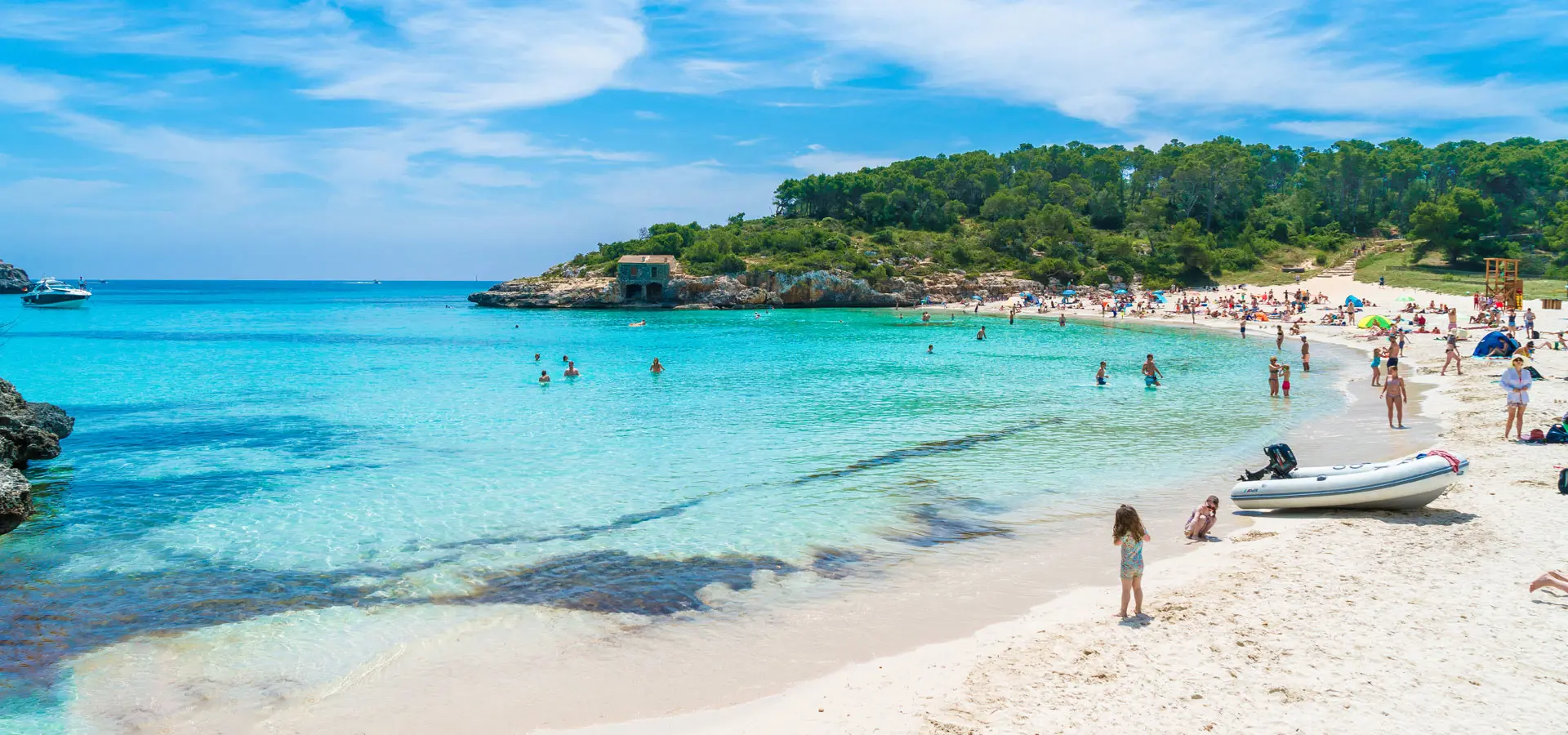
Palma de Mallorca. Cala Mondrago. Copyright © Sisterscom.com / Balate Dorin / Shutterstock
The Playa de Palma beach, also known as El Arenal ("the sands"), has a seafront promenade with a special bike lane and numerous tourist attractions including shops, restaurants and discos. The beach has fine white sand and crystal-clear waters.
The cuisine of Mallorca
In the island of Mallorca the pork is the king of typical dishes to taste, like: the botifarrons and the sobrassada (pork with a lot of paprika). Try also the Arròs Brut (meat, rice and vegetables) and the Frit Mallorquí or Freixura. Among the typical soups not to be missed: Sopes mallorquines, prepared with chard, cabbage, tomatoes, peppers and homemade bread. To finish the meal there are desserts such as greixonera de brossat (a fresh cheese cake) and l'ensaïmada (prepared with saim, pork fat).
Text by Federica Fusco
Aggiornamento a cura di Alisè Vitri
Avion Tourism Magazine
Photos: Copyright © Sisterscom.com; Shutterstock
Copyright © Sisterscom.com - All rights reserved.
Video: www.spain.info
Photos: Copyright © Sisterscom.com; Shutterstock
Copyright © Sisterscom.com - All rights reserved.
Video: www.spain.info
Tourism Board
www.infomallorca.net
www.spain.info
www.spain.info
Partnership with Booking.com
Where to sleep in Palma de Mallorca

Palma de Mallorca. La Seu Cathedral. Copyright © Sisterscom.com / Shutterstock
Palma de Mallorca is a welcoming city and offers different possibilities for accommodation.
To find the ideal hotel and the best offers you can do a search for the stars but also for districts or landmarks.
STARS
Hotels for stars, differentiated by type of services:
DISTRICTS
Hotels in the districts
LANDMARKS
Hotels in tourist areas
LANDMARKS
Hotels in tourist areas
AIRPORT
Hotels near the airport
WHERE TO GO in palma de mallorca
Monuments in Palma de Mallorca

Copyright © Sisterscom.com / Shutterstock
PALMA DE MALLORCA CATHEDRAL
The cathedral, built over the city walls of Palma de Mallorca's old town, was erected during the reign of Jaime II, and it comprises three naves. The main nave is home to the Trinidad chapel, where the remains of Kings Jaime II and Jaime III are laid to rest. The reforms carried out by the architect Antonio Gaudí in the early 20th century are reason of attractions. The Cathedral of Palma also has a tower with nine bells. It is particularly worth noting the size of the bell known as "N'Eloi", which measures two metres in diameter and weighs 4,517 kilos.

Copyright © Sisterscom.com / Shutterstock
BELLVER CASTLE
Bellver Castle is located on the crest of a hill, around 3 kilometres from the historic centre of Palma and is in Gothic style. Its circular structure is unusual, and it has three towers and a keep divided into four sections. Inside the castle there is a circular bailey with two storeys and a courtyard built over a cistern. There is a chapel on the second floor. Over the course of its history has had various different uses: King Jaime II ordered its construction as a royal residence instead in the 19th century it was converted into a mint.

Copyright © Sisterscom.com / Shutterstock
PALMA MARKET
Built in 1426 by Guillem Sagrera, the Palma Market - located in the city's historic quarter - is one of the most beautiful civil buildings on the whole of the island Palma de Mallorca. The base of the building is rectangular and its interior is made up of a single roof with an ogives dome supported by helicoidal columns. It is separated by a Garden of the Consulado del Mar, a beautiful Renaissance building, now headquarters of the Regional Government.

Copyright © Sisterscom.com / Shutterstock
ALMUDAINA ROYAL PALACE
The Almudaina Palace, wich name means a citadel outside the city walls, was the seat of the independent kingdom of Mallorca during the reigns of Jaime I, Sancho I and Jaime II. The castle visible today is the result of modifications to the Muslim fortress constructed from 1281. The building comprises a rectangular tower, home to the King's Palace, Queen's Palace, a hall known as Tinell, the Royal Chapel and courtyards. Inside, special mention should be made of a range of tapestries and furniture from different periods of history.
Museums in Palma de Mallorca

Copyright © Sisterscom.com / aldorado / Shutterstock
ES BALUARD: MUSEUM OF MODERN AND CONTEMPORARY ART
The Es Baluard Museum contains a varied and select collection of paintings, drawings and sculptures by artists representing the most significant international trends since the late 19th century to the present. Visitors can see works by such artists as Cézanne, Gauguin, Picasso, Miró, Magritte, Polke, Barcelóand Schnabel. In the museum there is also a noteworthy collection of Mediterranean landscapes and works by artists with links to the Balearic Islands, such as Santiago Rusiñol, Anglada-Camarasa and Gelabert. In addition to the permanent collection, the museum also offers a programme of temporary exhibitions.

Copyright © Sisterscom.com / Naeblys / Shutterstock
PILAR AND JOAN MIRO' FOUNDATION
A little-known side of Miró. The building which houses the Foundation was designed by the Spanish architect Rafael Moneo. From 1956 until his death in 1983, Joan Miró lived on the island of Mallorca, where he produced a prolific amount of art. The museum’s collection consists mainly of the numerous works donated by the artist from the four workshops he had in Mallorca, and comprises primarily paintings, drawings and graphic works. At the Foundation, there is also an important collection of documents and in the gardens is possible to see some of Miró’s sculptures.
Partnership with GetYourGuide
Excursions in Palma de Mallorca

Copyright © Sisterscom.com / Shutterstock
PALMA CATHEDRAL
Fast Entry Ticket for Palma Cathedral & Diocese Museum. The sandstone cathedral is a work of ecclesiastical art. The main nave houses the Trinidad Chapel where the remains of the kings Jaime II and Jaime III can be found. Admire the columns of the main door, the sculptures by Guillermo Sagrera on the Portal del Mirador, the additions made by the architect Antoni Gaudí and the works by Miquel Barceló in the Santísimo Chapel. The Diocese Museum exhibits paintings, pulpits, prayer books and Arab tapestries. Ticket for 1 day. More info: Palma Cathedral Tour.

Copyright © Sisterscom.com / Shutterstock
OLD TOWN TOUR
Discover the historic areas of Palma and the best tapas bars with a local insider. A night time city tour of the old town of Palma to discover the Palma Cathedral, La Llotja Exchange, Consolat del Mar, Almudaina Palace, Es Baluard Museum, Plaça Major and Plaza del Mercat, the Gerber District, the Parc de la Mar, the Es Baluard Fortress and the Balearic Catapult. At the end of the approximately 1 hour and 45 minute tour, take a seat in a typical tapas bar to taste pintxos and tapas. Duration 2 hours. More info: Old Town Tour.

Copyright © Sisterscom.com / Shutterstock
CABRERA ARCHIPELAGO NATIONAL PARK
South of the island of Majorca, in the Balearic Islands just over an hour by boat from Mallorca, you will find an unspoilt island ecosystem, a place of 10.021 hectares with great natural beauty. The marine ecosystem stands out in this cluster of calcareous islands and islets and it is one of the best conserved sea beds on our coast. There are also many endemic plants and important bird colonies. For these reasons it was declared a Land and Sea-based National Park in 1991.

Copyright © Sisterscom.com / Shutterstock
CAVES OF HAMS
Situated in Porto Cristo, the caves are renowned for their singular fish-hook shaped formations. There are three main caves, the round cave is a vast open area which includes a botanical garden and is full of different species of free-flying birds that are native to the island of Mallorca. In blue cave, with its blue lighting LED, you can enjoy the educational documentary, “Discovering the past” and than be amazed by the Magical Mozart show in the underground lake called The Sea of Venice. Duration 1.5 hours. More info of tour: Caves of Hams.

Copyright © Sisterscom.com / saranya33 / Shutterstock
BUS TOUR OF PALMA
Explore Palma de Mallorca with a 24 hour hop-on and hop-off bus ticket. Jump off at any of the 18 stops to explore the city’s attractions, such the Catedral El Seu, the Almudaina Palace, the Castell de Bellver, Plaza Espana, the beaches and gardens of Palma. Buses run every 20-25 minutes, from 9:30 a.m. in summer, spring and autumn, and from 10:00 a.m. in winter. Is possible to add a 60 minute Boat Tour or the Bellver Castle to your bus ticket. Tour duration: 80 minutes. Tiket duration 24 hours. More info: Bus Tour of Palma.

Copyright © Sisterscom.com / Shutterstock
CAVES OF DRACH
Guided tour from the south of Mallorca to the Caves of Drach, in the town of Manacor. Formed millions of years ago by the water pressure of the Mediterranean sea, comprise four caves full of stalagmites and stalactites. The most interesting attraction is their underwater Lake Martel. While inside the caves, admire a light show synchronised with the melodies of a small orchestra. Finish your visit with a stop at an exhibition on Manacor's pearl farming industry. Transport via coach. Duration 4 hours. More info of tour: Caves of Drach.

Copyright © Sisterscom.com / Shutterstock
ISLA DRAGONERA CRUISE
Excursion on a catamaran to explore the Dragonera Island, a nature reserve. The buffet on board includes paella, green salad, pasta salad, water and sangria. The catamaran has submarine vision - peer out its underwater windows to see the marine life of the island. Sailing along the coast of Mallorca, you'll pass by Cala Fornells, Camp de Mar, Cala Llamp, Puerto de Andratx and San Telmo. Once on Island, you'll get the chance to explore it for a full hour - swim in its cave, visit the museum, see its flora and fauna. Duration 5 hours. More Info of tour: Isla Dragonera Cruise.
Discover all tours
News & Useful info
Shopping
You might be interested in
Other destinations
Airports nearby Palma de Mallorca






